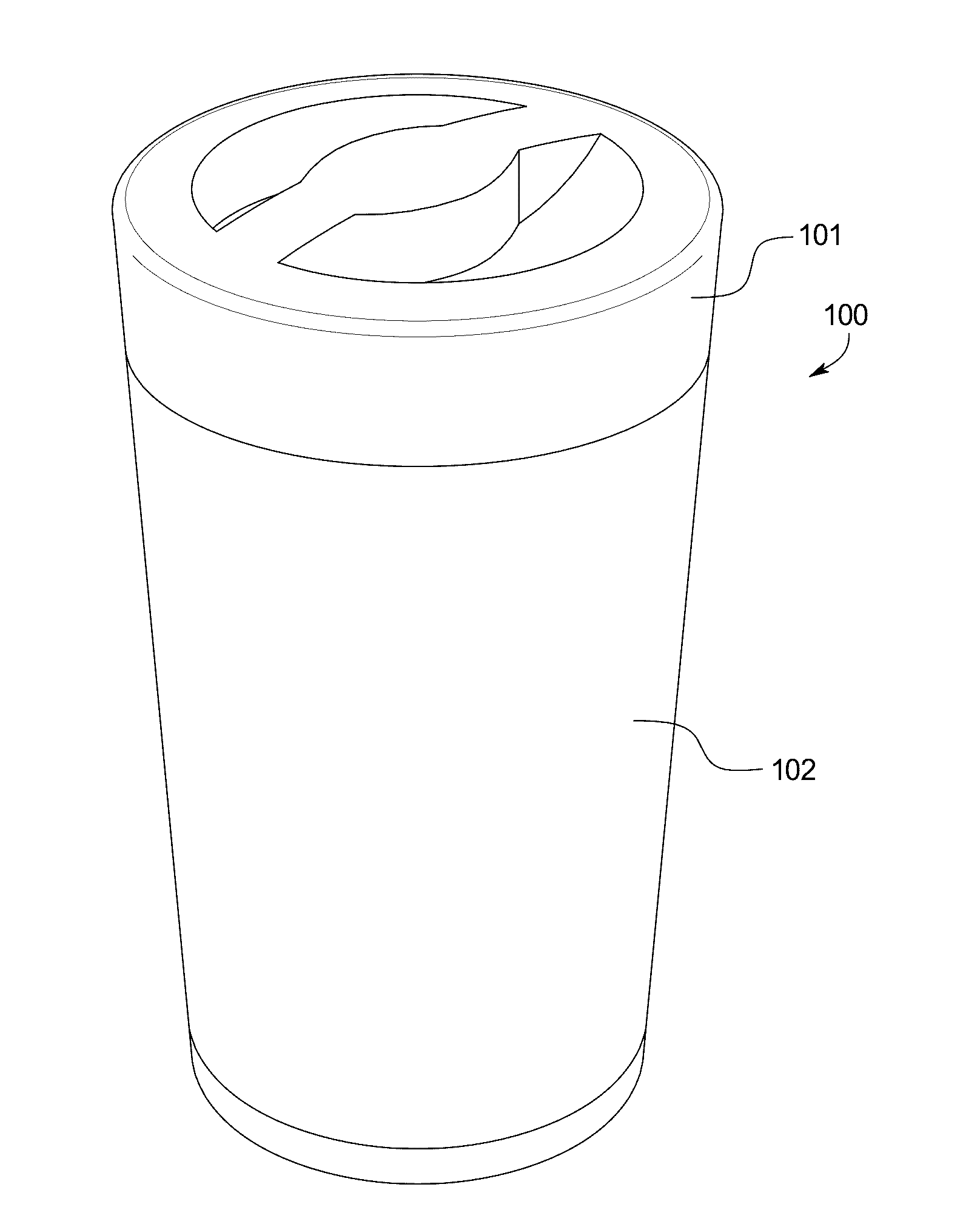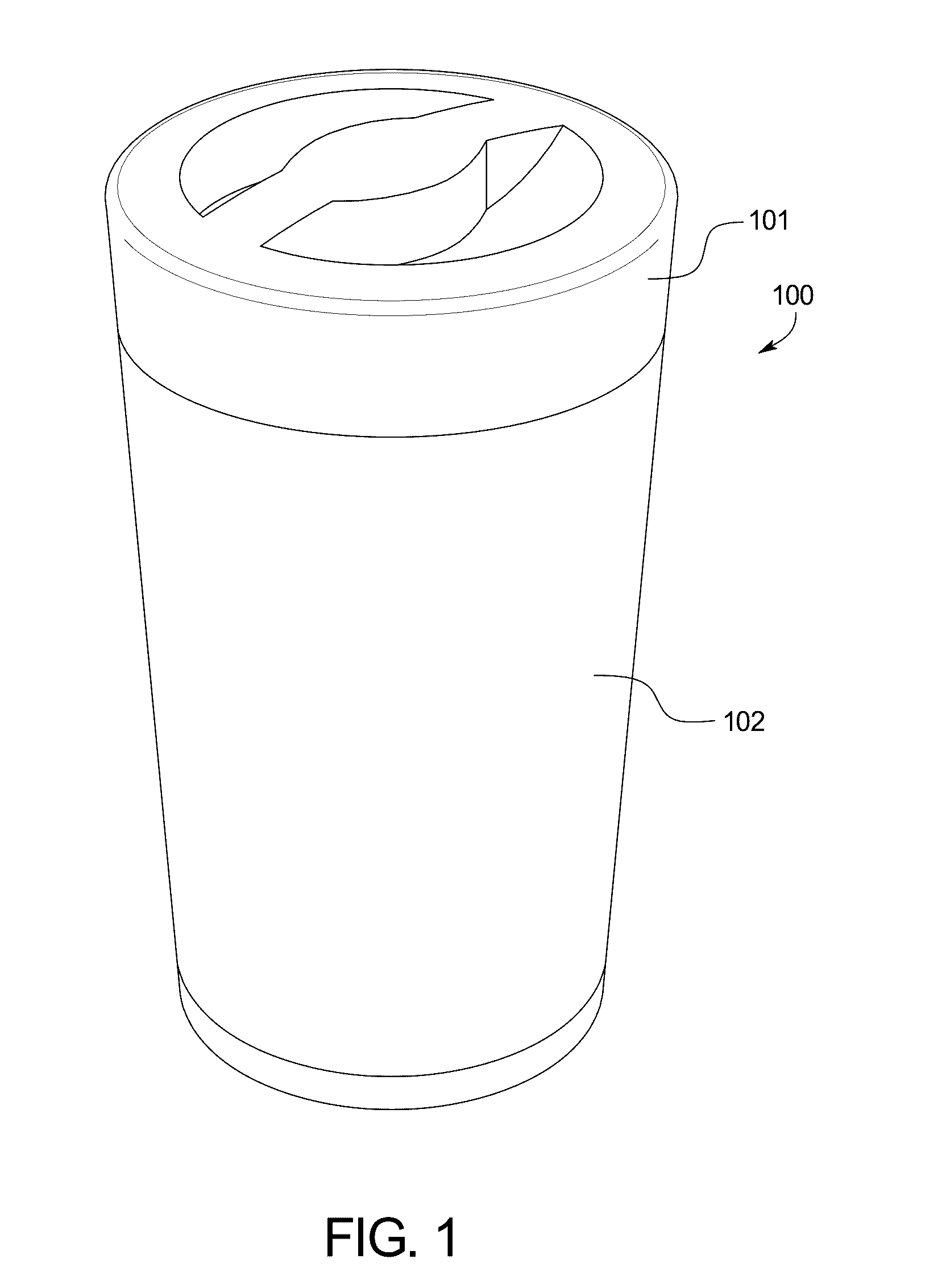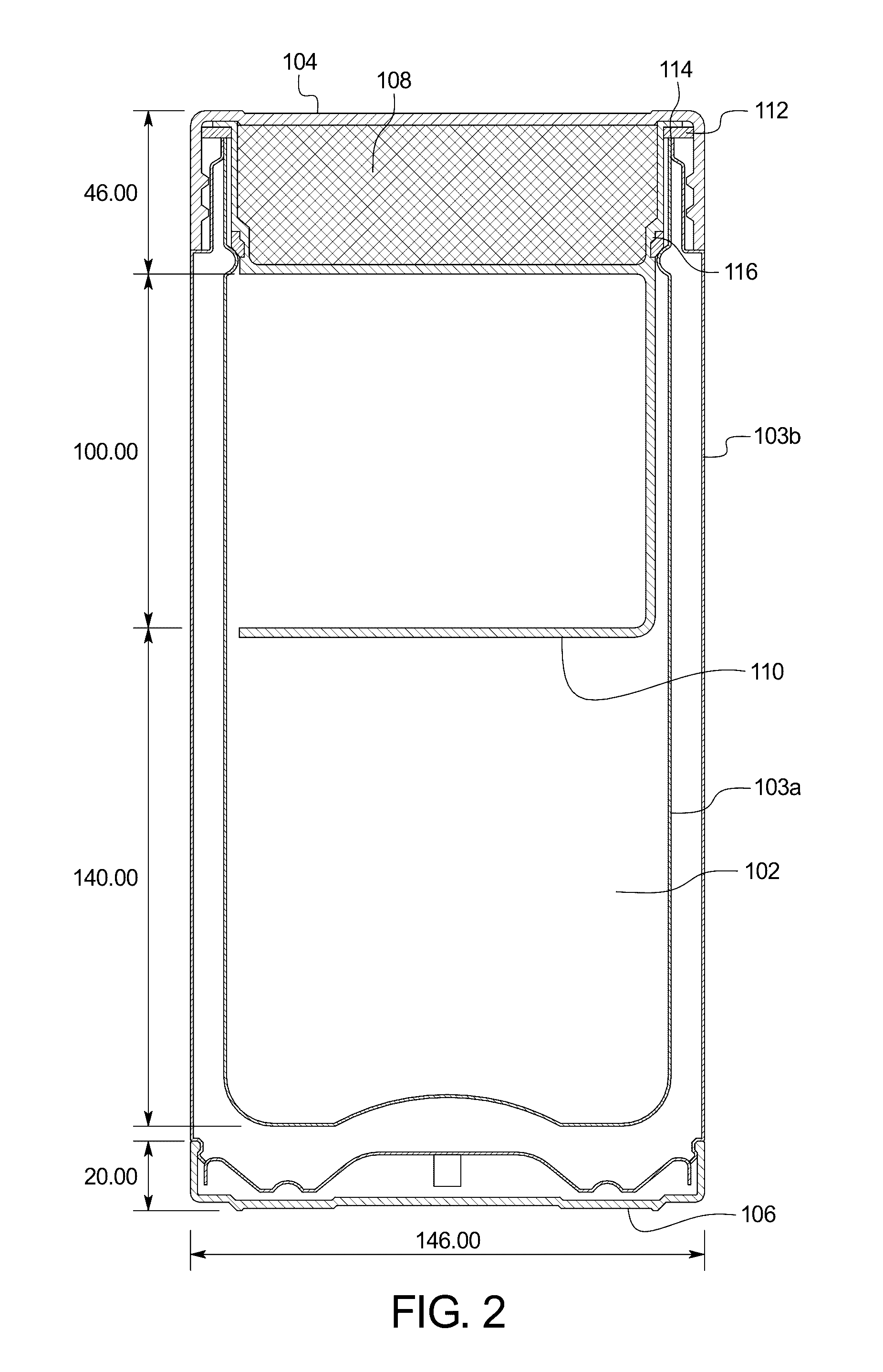Device and methods for transporting temperature-sensitive material
a technology for temperature-sensitive materials and devices, which is applied in the direction of containers preventing decay, domestic cooling devices, lighting and heating devices, etc., and can solve problems such as unintended damage to the contents of containers
- Summary
- Abstract
- Description
- Claims
- Application Information
AI Technical Summary
Benefits of technology
Problems solved by technology
Method used
Image
Examples
example 1
[0036]A Unit (umbilical cord blood) at an initial temperature of 23° C. was sealed in a zip lock bag containing appropriate absorbent material as per IATA requirements and was placed in the lower part of the container. The lid included two 5° C. PCM packs previously kept for 24 hours in a domestic freezer, at approximately −22° C.+ / −2° C. The container was maintained in an environment with temperatures ranging from 26° C. to 28° C. for a total period of 90 hours as seen in FIG. 7. The Unit's temperature remained below the threshold of 26° C., which is the maximum desired temperature for such biological units. The temperature of the unit had been gradually decreased to reach the final holding temperature of 9° C., over a period of 15 hours thus avoiding the effect of a “cold shock” that would otherwise damage the unit and affect the viability of cells. The temperature of the unit had been maintained at approximately 9° C. for a further 30 hours, providing ample shipping time at appro...
example 2
[0037]A Unit at temperature of 10° C. was sealed in a zip lock bag containing appropriate absorbent material as per IATA requirements, placed in the lower part of the container and closed with the lid loaded with two 5° C. PCM packs previously kept for 24 hours in a domestic freezer, at approximately −20° C. The container was placed in external temperature, ranging from 25° C. up to 29° C. for 90 hours. The Unit's temperature was kept between 4° C. and 10° C. for the first 48 hours and between 10° C. and 24° C. for the remaining shipping time of 42 hours. Total 90 hours within a temperature range of 4° C. and 24° C., as seen in FIG. 8.
example 3
[0038]A Unit at temperature of 28° C. sealed in a zip lock bag containing appropriate absorbent material as per IATA requirements, was, placed in the lower part of the container and closed with the lid loaded with two 5° C. PCM packs previously kept for 24 hours at normal room temperature approximately 28° C. The container was placed in an environment with external temperature of between about −20° C. and about −18° C. for a period of 30 hours. The Unit's temperature remained above the threshold of 4° C. as provided in FIG. 9.
PUM
 Login to View More
Login to View More Abstract
Description
Claims
Application Information
 Login to View More
Login to View More - R&D
- Intellectual Property
- Life Sciences
- Materials
- Tech Scout
- Unparalleled Data Quality
- Higher Quality Content
- 60% Fewer Hallucinations
Browse by: Latest US Patents, China's latest patents, Technical Efficacy Thesaurus, Application Domain, Technology Topic, Popular Technical Reports.
© 2025 PatSnap. All rights reserved.Legal|Privacy policy|Modern Slavery Act Transparency Statement|Sitemap|About US| Contact US: help@patsnap.com



